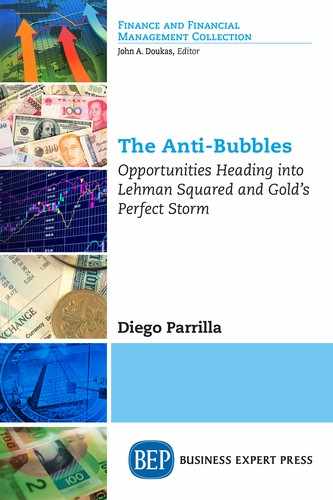Benchmarks, The New Partner in Crime
I believe that benchmarks are partially responsible for the current trend in financial inflation. Benchmarks are self-imposed guidelines for investments that in practice act as trend-following mechanisms that are relentlessly following the steps of central bank buying, contributing to the creation of bubbles.
Benchmarks set the expectations for asset allocation and returns, the bar that active investment managers are held against. In principle, investment managers have the discretion to be overweight, neutral, or underweight relative to what the benchmark dictates, but in practice have quite small discretion for tactical asset allocation decisions, which means that the bulk of the assets will stay invested in the benchmark, regardless of their valuations.
Traditional allocation models seek to mitigate overall portfolio volatility by combining asset classes with low correlations to each other, which has proven to be less stable, with long-term correlations such as globalization driving correlations higher. A dynamic that has been exacerbated by the wave of parallel bubbles that are being created by the monetary policy without limits. This leads to the dangerous and worrying development of false diversification.
Risk and Behavioral Factors
Risk factors can be defined as the underlying drivers of risk exposures and performance. Some of those risk factors are interest rates risk, credit risk, inflation risk, currency risk, and commodity risk. The traditional government bond asset class is therefore broken down into its risk components, namely interest rate, credit, and currency. This risk is then aggregated across all components to provide a better assessment of diversification and volatility.
The investment industry is slowly but steadily moving away from allocations based on asset classes to allocations based on risk factors. A positive development in my view that will make gold and oil are fundamental building blocks for risk-factor allocations, as they provide unique diversification under certain scenarios, such as inflation risk, duration risk, currency risk, and geopolitical risks.
From Beta to Alpha
Asset allocators looking for ways to reduce their exposure to the wrong asset classes can opt to switch from beta allocations (long-only) to alpha allocations (long/short), which have the potential to participate in further appreciation and simultaneously reduce the downside exposure.
Financial Assets
It is a fact that monetary policy without limits has distorted the valuation of financial assets around the world. The epicenter has been centered on government bonds, but has spread across other credit and equity instruments, benefiting the weakest players (such as high yield or EM) the most.
The asset inflation has had a positive effect on the economy via the wealth effect and other inflationary dynamics that I will discuss later under the Soros Reflexivity section. A calculated bet from Central Banks that hopes that fundamentals will converge to prices. Over the past few years, the deflationary pressures and the perceived fragility of the recovery (or at least lack of strength) has been an excuse for Central Banks to keep “lower for longer” rates.
The normalization of monetary policy (interest rates going up) is bad news for financial asset valuations and will test the resilience of the underlying fundamentals of the economy as the monetary stimuli are removed.
Faced with low or even negative interest rates and inflated financial assets, investors are looking for alternative investments such as real estate, infrastructure, or timber, among others. These Real Assets have benefited indirectly from low borrowing costs, but generally lagged financial asset inflation due to the slack and overcapacity in the system.
Faced with potential hikes and inflationary pressures, will real assets behave like bonds (go down) or benefit from inflation?
The key differentiation is leverage. Real estate markets that are heavily leveraged will likely fall as borrowing costs go up. Real estate markets that are not leveraged will likely hold their value better, and even go up, as monetary inflation kicks in.
Monetary Assets
I would put gold into a different category, called monetary assets, which does not only benefit from inflation but also plays a key role as store of value and in my view is best placed to play the role of ultimate reserve currency of the world. More on this shortly.
